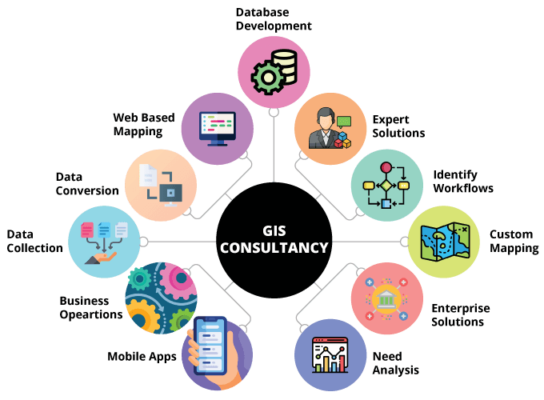
In the age of cloud computing, satellite imagery analysis has reached unprecedented heights of efficiency and accuracy. This blog explores the dynamic landscape of satellite imagery analysis in the cloud era, presenting a compelling case study and a systematic approach to leveraging cloud tools, models, spatial algorithms, programming languages, and time series data. Discover how this technological shift is redefining the capabilities of analysts and why partnering with GISTechKE is the key to unlocking the full potential of cloud-based spatial intelligence.https://medium.com/@emorphis.technologies/what-is-cloud-computing-everything-you-need-to-know-439b99e69625
The Cloud Computing Advantage:
Cloud computing has revolutionized the way we process and analyze satellite imagery. Instead of relying on local processing power, analysts can now harness the immense computational resources of cloud platforms. This not only accelerates the analysis process but also enables the handling of larger datasets and the implementation of sophisticated algorithms.
Case Scenario: Monitoring Deforestation in the Amazon Rainforest
Consider a scenario where we aim to monitor deforestation activities in the Amazon rainforest. With cloud computing, we can seamlessly process a time series of high-resolution satellite images covering vast swathes of the rainforest. This would be a monumental task for traditional computing resources, but with the cloud, it becomes not only feasible but highly efficient.Remote Sensing
The Systematic Process:
1. Data Acquisition and Ingestion:
– Obtain satellite imagery from reliable sources such as NASA, ESA, or commercial providers. Ingest the data into the cloud storage.Spatial Data Collection and Database Management
2. Preprocessing and Calibration:
– Correct for sensor-specific distortions, atmospheric interference, and geometric variations in the imagery. This ensures that the data is accurate and consistent.
3. Image Registration and Mosaicking:
– Align multiple images to create a seamless composite covering the entire area of interest.
4. Feature Extraction and Classification:
– Leverage advanced algorithms and machine learning models to identify and classify objects or features of interest (e.g., forest cover, roads, water bodies).
5. Temporal Analysis:
– Analyze the time series data to detect changes over time. This is crucial for tasks like deforestation monitoring.
6. Spatial Analytics:
– Apply spatial algorithms to derive meaningful insights. This can include tasks like proximity analysis, hotspot detection, and pattern recognition.Data Analysis and Spatial Analysis
7. Data Visualization and Reporting:
– Create visualizations and reports to communicate the findings effectively.
Advantages for Analysts:
1. Scalability: Cloud platforms offer virtually limitless computational resources, enabling analysts to process large volumes of data with ease.
2. Cost-Efficiency:Pay-as-you-go models mean that analysts only pay for the resources they use, eliminating the need for substantial upfront investments in hardware.
3. Collaboration:Cloud-based workflows facilitate seamless collaboration among analysts, regardless of their geographical locations.
4. Real-Time Processing:Cloud platforms can handle data in near real-time, allowing for timely responses to dynamic situations.
At GISTechKE, we’re at the forefront of cloud-based satellite imagery analysis. Our team of experts combines deep industry knowledge with cutting-edge technology to deliver solutions that empower analysts and drive actionable insights. By partnering with us, you gain access to a wealth of experience, a proven track record, and a commitment to pushing the boundaries of spatial intelligence in the cloud era. Join us in revolutionizing how you perceive and analyze satellite imagery data.